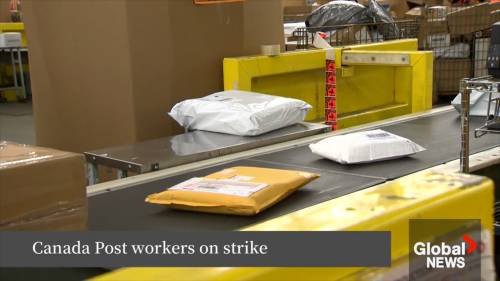As Canada braces for a potential nationwide postal disruption, millions of Canadians find themselves wondering how a Canada Post strike might upend their daily routines and business operations. With negotiations between the Crown corporation and the Canadian Union of Postal Workers (CUPW) at a critical impasse, the ripple effects could soon be felt across households and businesses nationwide.
“We’re looking at potentially the most significant postal disruption since 2018,” explains labor relations expert Dr. Amrita Singh. “The difference now is our increased dependence on delivery services following pandemic-era shifts in consumer behavior.”
The current dispute centers primarily on wages and working conditions, with union representatives emphasizing that postal workers have faced increasing delivery volumes while contending with stagnant compensation. Meanwhile, Canada Post maintains that financial constraints limit their ability to meet all union demands while ensuring long-term sustainability.
For average Canadians, the immediate concerns are practical. Government check deliveries—including some pension payments and tax refunds—could face delays, though federal authorities have assured that contingency plans exist for essential services. More concerning for many is the potential disruption to medication deliveries, particularly for rural residents who rely heavily on mail-order pharmaceuticals.
Small business owners appear especially vulnerable. “Nearly 40% of my sales are shipped through Canada Post,” says Melissa Chen, who operates an online craft business from Winnipeg. “Alternative couriers are available, but they’ll cut deeply into my margins—some charge nearly double for the same service.”
E-commerce giant Amazon has already issued notices to Canadian customers warning of possible delays, while simultaneously accelerating their shift toward proprietary delivery networks in urban centers. This highlights a troubling reality: large corporations can weather such disruptions far more effectively than small businesses with limited resources.
Financial institutions have encouraged customers to shift to electronic statements and payments, with TD Bank representative James Morrison noting, “We’ve been preparing for weeks by encouraging digital alternatives, but we recognize some customers still depend on physical mail.”
The timing is particularly challenging as the holiday season approaches—traditionally Canada Post’s busiest period. Last year, the carrier delivered over 25 million parcels in December alone. A prolonged strike could force consumers to complete holiday shopping earlier or pay premium prices for alternative delivery options.
Rural communities face distinct challenges, as noted by Canada News reporting in recent weeks. “In many remote areas, there simply aren’t competitive alternatives to Canada Post,” explains rural advocate Sarah McInnis. “When the postal service stops, these communities become effectively isolated from essential deliveries.”
Labor experts from CO24 Business have indicated that work stoppages typically last between two to four weeks, though previous postal disputes have occasionally stretched longer. The federal government retains the option to legislate workers back if deemed necessary, though such intervention remains politically contentious.
Both sides continue mediated discussions, with CUPW spokesperson Michael Torres stating: “Our members don’t want to disrupt service, but they deserve fair compensation for increasingly demanding work.”
As Canadians prepare for potential disruption, the situation raises important questions about our national infrastructure. In an increasingly digital world, how essential is reliable physical mail service? And what responsibilities do essential service providers and the government have in ensuring continuity during labor disputes that affect millions of citizens?











